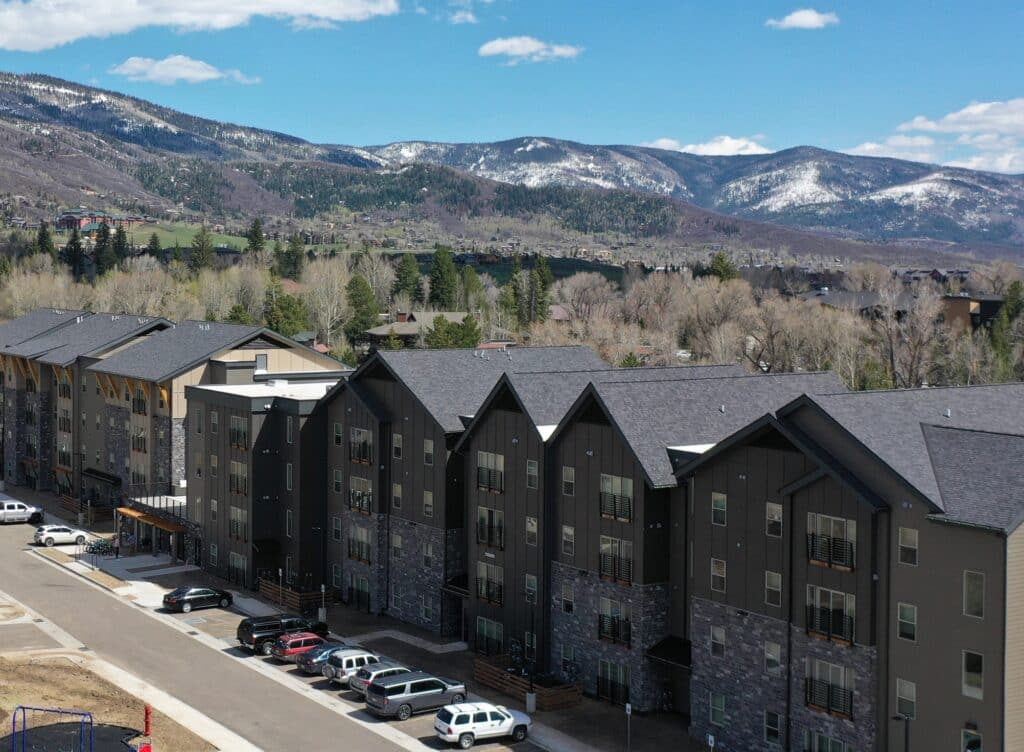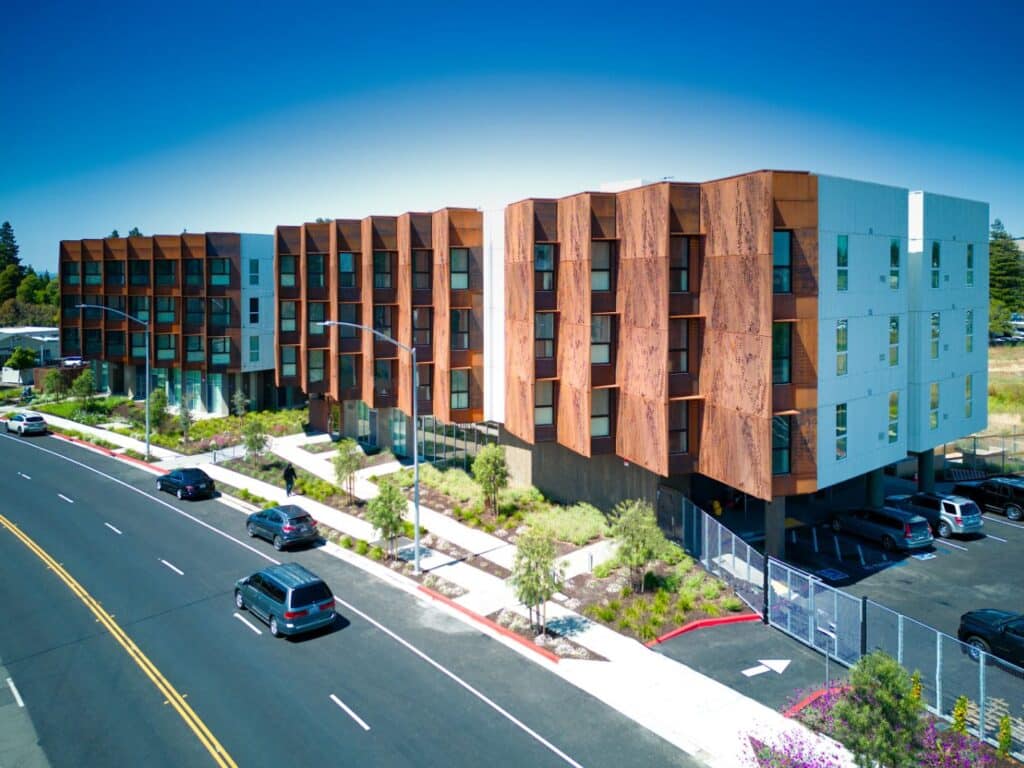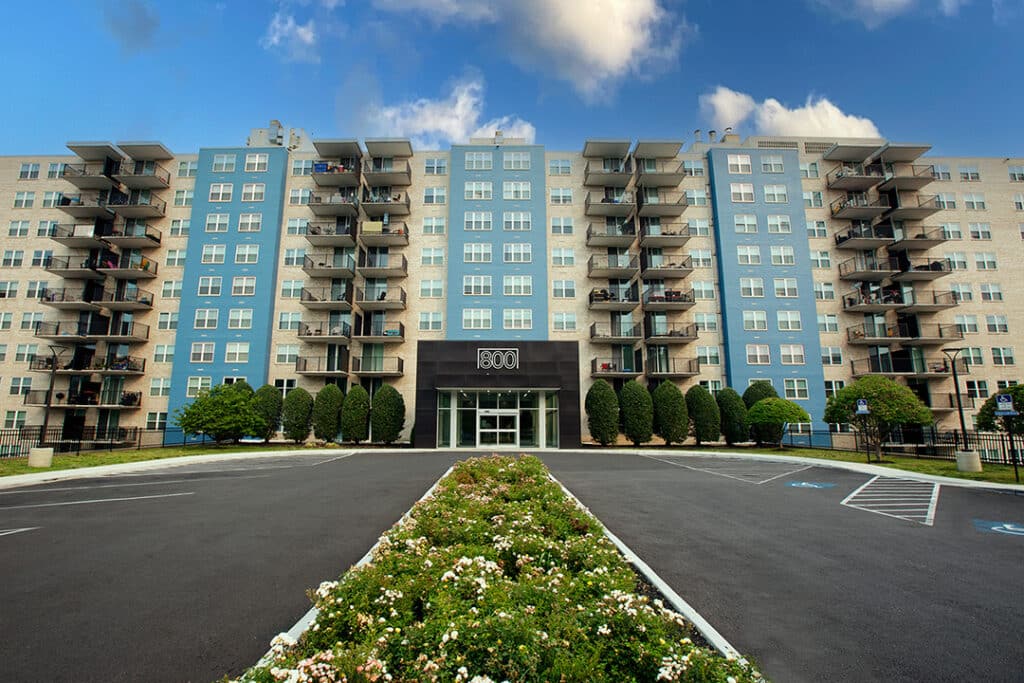What Makes A Winner A Winner?
TCA Profiles Four Novogradac Developers of Distinction 2024 Award Winners

By Abram Mamet
12 min read
Since 2010, the Novogradac Journal of Tax Credits has awarded several developers for distinguished work in a variety of impact areas related to affordable housing. The award, called the Novogradac Developers of Distinction, recognizes excellence in the use of Low Income Housing Tax Credits and/or other federal funding sources to construct projects that achieve community development, affordable housing and/or historic preservation.
Though the award categories have expanded and changed somewhat over the years, they are generally judged on a few key criteria, such as community impact, the successful use of community resources, innovative strategies and replicability.
This year’s awards—announced in July—included five categories: metropolitan community impact, rural community impact, housing a special needs population, preservation of existing affordable rental housing and family housing.
Tax Credit Advisor spoke with four of this year’s winners to find out what set their projects apart and to explore strategies that can be used across the industry to strengthen the success and quality of affordable housing nationwide. Though all our respondents share unique paths to successful development, all projects shared common themes of deeply held collaborative relationships, unique solutions to contemporary problems and mission-oriented development.
Metropolitan Community Impact Winner: The Community Builders, Inc. for 250 Centre (Boston, MA)
The Metropolitan Community Impact award was given to The Community Builders, Inc. (TCB), a National Housing & Rehabilitation Association (NH&RA) member organization that has worked for 60 years to build affordable housing both in its native Boston and elsewhere in the country. TCB was recognized for its 250 Centre development, which represented the culmination of a decades-long project helping to rebuild the once-destroyed Jamaica Plain neighborhood in southwest Boston. Opening late last year, 250 Centre provides 110 apartments for a wide range of incomes.

In the late 1960s and early 1970s, neighborhoods in many urban centers across the United States were being divided by highway projects as cities expanded and the proliferation of car travel rapidly outgrew the country’s dated infrastructure. Though the process resulted in the demolition of housing and subsequent construction of roadways in most cases, in Boston, a vibrant collection of neighborhood interest groups banded together to successfully stop the construction of a major highway through the heart of the city.
Though no highway was built, city planners “had already been taking homes” and razing them, says Andy Waxman, vice president of real estate development at TCB. Bleak areas of emptiness now ranged through once-vibrant neighborhoods, like Jamaica Plain, straight into downtown.
Eventually, the local transportation department utilized the land to expand the city’s above- and below-ground train system (the T). “But then a lot of the land around the T sat vacant for years,” says Waxman.
Once again, various community groups mobilized to ensure that some of the inevitable rebuilding that would occur on the now-profitable land surrounding the T stops would remain affordable and preserve the vibrant character of the neighborhoods that once existed. This resulted in the creation of a partnership of three affordable housing developers—TCB, alongside Jamaica Plain Neighborhood Development Corporation (JPNDC) and Urban Edge—who in 2005 were awarded a contract to develop a substantial block in Jamaica Plain called Jackson Square.
Waxman says that the three organizations worked to “plan together and develop separately,” resulting in a cohesive project with a mix of owners. The partnership has been successful and has continued work on two other sites with the city of Boston, both very close to the 250 Centre site in question.
TCB’s first development in Jackson Square opened in 2012, and 250 Centre represents its final major contribution to the project.
Waxman says that 250 Centre is distinct for its integration into the fabric of the community, which he attributes in part to the intentional community planning process that took place during the uniquely lengthy development timeline. As a result, Waxman says that 250 Centre, “is very responsive to the neighborhood, the needs of the neighborhood and the needs and goals of the folks in the neighborhood. So, this was not a one-off project, but part of a decades-long history in Boston.”
Additionally, Waxman points to a substantial income mix within not only 250 Centre but across the Jackson Square portfolio. “There really are, in the same building, deeply affordable units—the city of Boston has a homeless set-aside requirement, so folks are coming out of homelessness—up to market-rate apartments, with middle-income and a little bit under market” in between.
And, Waxman notes, “It’s not just about the housing. It’s about building a lot of different elements.” For example, the partnership group is rebuilding some of the vacant land into a greenway and including a neighborhood-oriented retail space. Additionally, the property is located steps from a T stop, making the homes relatively accessible for folks working across the city.
Rural Community Impact Winner: Overland Property Group, for Anglers Four Hundred (Steamboat Springs, CO)
The Rural Community Impact award was given to Overland Property Group (OPG), a relationship-driven company that has expertise and specializes in rural communities in the West and midwestern United States. OPG was given the rural impact award for Anglers Four Hundred, a 75-home property located in rural Routt County, CO.
Anglers Four Hundred was not a whim project that capitalized on today’s suddenly red-hot housing markets in once-sleepy mountain towns. Rather, it is the latest peak in a now decade-long partnership built with care and intentionality, says Matt Gillam, one of OPG’s managing partners.

That relationship began in the mid-2010s when Gillam says OPG was searching for a foothold in Colorado and a community where the organization could have a real impact. “We don’t look to go where everybody else is,” says Gillam. “We look for opportunity in places that maybe people are overlooking.”
Though it is difficult to consider today, at that time, Colorado’s mountain towns were still recovering from the 2008 financial crisis, and with an almost exclusively tourism-dependent economy, the construction of long-term housing was extremely limited. This was largely due to the preconceptions on behalf of developers, says Gillam. “Mud season was, ‘oh, you’re not going to be able to rent. You’ll be full during the ski season, and you’ll be vacant in the mud season.’ And we just didn’t believe that that was the trend anymore.” Gillam says that OPG conducted a thorough review of the state to assess where there was a gap in affordable housing construction. “Every time we looked at it, no matter which way we looked at it, there was a big gaping hole in the northwest corner of Colorado,” where Steamboat is. “In this massive geographic area where there had been no affordable housing allocated in nearly 25 years.”
Gillam says that the relationship started at the right time and place for both partners. The city, Yampa Valley Housing Authority (YVHA) and local planners all desperately wanted affordable housing built, and OPG wanted a partner in the state of Colorado. That partnership has born desperately needed affordable housing for the community, with Anglers Four Hundred representing the third project OPG has completed in Steamboat.
“Most people know, mountain communities are a lot like rural communities in that if you don’t do something right, you will never get a shot to do it again,” says Gillam. “So, we look at it as a badge of honor that we were welcomed back and were able to partner again into our third success.”
Gillam notes that the deal was largely made possible by the existence of CHFA’s four percent state tax credit. “The ability the state credit had to make a four percent deal in the mountains pencil effectively, that had a huge impact, as well as the Housing Development Grant Funds offered by the Colorado Division of Housing, and the Housing Loan Fund from YVHA and Routt County. All of those contributed to making a four percent deal feasible. We needed every dollar we could get before interest rates and inflation went crazy, and we certainly needed it after.”
Though those dollars helped the project pencil, it is the deep relationships that OPG’s team has formed with the local Steamboat community that have allowed their work in the town to thrive and become embedded in the fabric of the city. “To me, it really all starts with partnerships,” says Ryan Zent, OPG’s vice president of development. “Really trying to involve the local community,” Zent says, allows the developer to deliver “affordable housing to where people are working, and where people are going for entertainment and childcare, etc. I think partnerships make that happen.”
Special Needs Population Winner: Eden Housing, Inc. for Blue Oak Landing (Vallejo, CA)
The award for distinction in service for a special needs population was given to Eden Housing, Inc., an NH&RA member that has been developing affordable housing throughout California for over 50 years. Eden was recognized for Blue Oak Landing, a 75-unit property serving individuals and families experiencing or at risk of experiencing homelessness.

According to HUD data, California has experienced a larger increase in homelessness over the past decade than any other state in the country. Indeed, while countrywide homelessness has decreased during that time, the percentage of individuals and families experiencing homelessness in California increased by 31 percent. The city of Vallejo, in the northern part of San Francisco’s Bay Area, is no exception and has struggled to serve both residents and the community with high-quality supportive housing amidst the crisis.
In response, the city put out an RFP in 2018 for a Permanent Supportive Housing (PSH) development on land that Vallejo would donate to the developer. Eden assembled a team alongside the James E. Roberts-Obayashi Corporation and local modular manufacturer, Factory OS, to put forward a unique design and were awarded the project. Blue Oak Landing operates on the “housing first model,” says Linda Mandolini, Eden’s CEO. This provides immediate access to housing, with support services closely following, removing unnecessary barriers to housing. Through that model, Mandolini says, “the daily stress of being homeless is taken out of the equation.”
To elevate housing beyond shelters and towards homes, Linda Mandolini says that the team focused on design aspects that would “foster a sense of calm and security, while also minimizing costs for the resident.” Mandolini says that this was achieved through unique design aspects, such as open-air corridors and sawtooth paneling inspired by local geography. Additionally, Blue Oak Landing provides “furnished units, welcome home kits, free internet access and covering all utility expenses” for all residents.
Critically, the housing is also extremely energy efficient (“likely the most energy efficient supportive housing project in California,” says Mandolini) providing a model for other PSH projects in the area. “There are many incentives now to make green building cost competitive upfront, with significant long-term savings,” Mandolini says, meaning that the efficiency of the project is easily replicable in California and beyond. The impacts of lower operating costs not only benefit the environment but also help “ensure the long-term financial feasibility of the community, allowing the property to put more resources into much-needed resident programs.”
Preservation of Existing Affordable Rental Housing Winner: Vesta Corporation, for 800 Southern Avenue Apartments (Washington, DC)
Vesta Corporation (Vesta), an NH&RA member, has been building and managing affordable housing properties across the United States since 1998. Vesta was recognized for its work preserving 800 Southern Avenue (formerly Park Southern), a half-century-old apartment building in working-class southeast DC, alongside the building’s resident association.
Originally built in 1965, the community was for years a foothold for families in the area who did not qualify for federal housing subsidies but still needed affordable housing. Over the years, however, the building fell into disrepair, and after a previous owner was unable to provide adequate housing services, the city transferred ownership and management of the property to Vesta in 2014. Looking for a unique and powerful way to restore the building to service, Vesta partnered with the Park Southern Residents’ Council to purchase and fully redevelop the property using the District’s novel Tenant Opportunity to Purchase Act (TOPA).

This partnership allowed Vesta to focus on “restoring the building as a pillar in the community and showcasing the impact of strategic redevelopment in revitalizing communities,” says Aaron Greenblatt, executive vice president and counsel for the Vesta Corporation. “While navigating the partnership with a co-owner comprised of community residents presented obvious challenges, it gave valuable insight into the very real needs of the community and residents,” Greenblatt says.
Unfortunately, construction began shortly after the onset of the COVID-19 pandemic in early 2020, leading to potential challenges with construction. Despite the unfortunate timing, Greenblatt says that Vesta was able to leverage deeply held industry relationships to come to creative solutions to keep the project on track. “In order to maintain our necessary construction schedule, we relied heavily on our construction partner, Marous Brothers Construction, and in-house personnel to ensure careful, thoughtful and strategic deployment of the redevelopment plan. Given the circumstances, no idea was dismissed without thorough consideration. It worked out very well for us.”
Though many local developers often find TOPA challenging, Greenblatt stresses that the novel approach of partnering with tenant’s associations allows both entities to leverage the law to their advantage and secure housing and a strong community for years to come. “TOPA and partnering with residents achieve a better outcome as it relates to community buy-in, hyper-local insights, public relations and social responsibility. Even with the challenges, the hard work makes for a better end product and leads to award-winning opportunities just like this.”